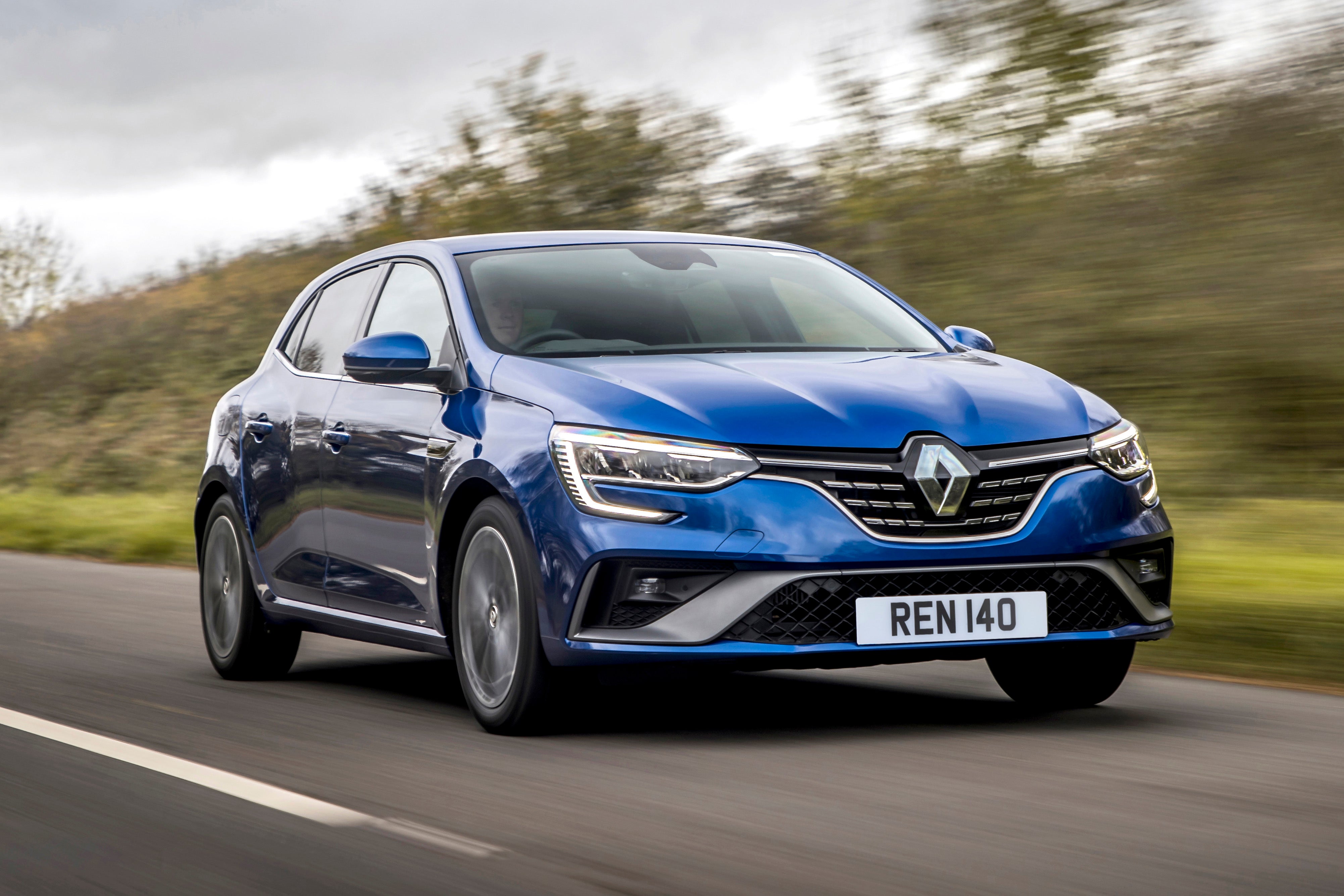Renault Megane (2016-2022) Review
Written by Andrew Brady
Quick overview
Pros
- Strong refinement and comfort
- Stylish exterior design
- Low running costs on diesel models
Cons
- A bit sloppy in corners
- Dual-clutch gearbox hesitant
- Fiddly infotainment
Overall verdict on the Renault Megane
"The Renault Megane was a handsome family hatch that offered good standard equipment, had temptingly low prices and a plush, comfortable ride. It was relaxing to drive, without displaying any real wow factor. Still, its narrow engine line-up, so-so cabin quality, mediocre practicality and sloppy body control made it an also-ran in this class."
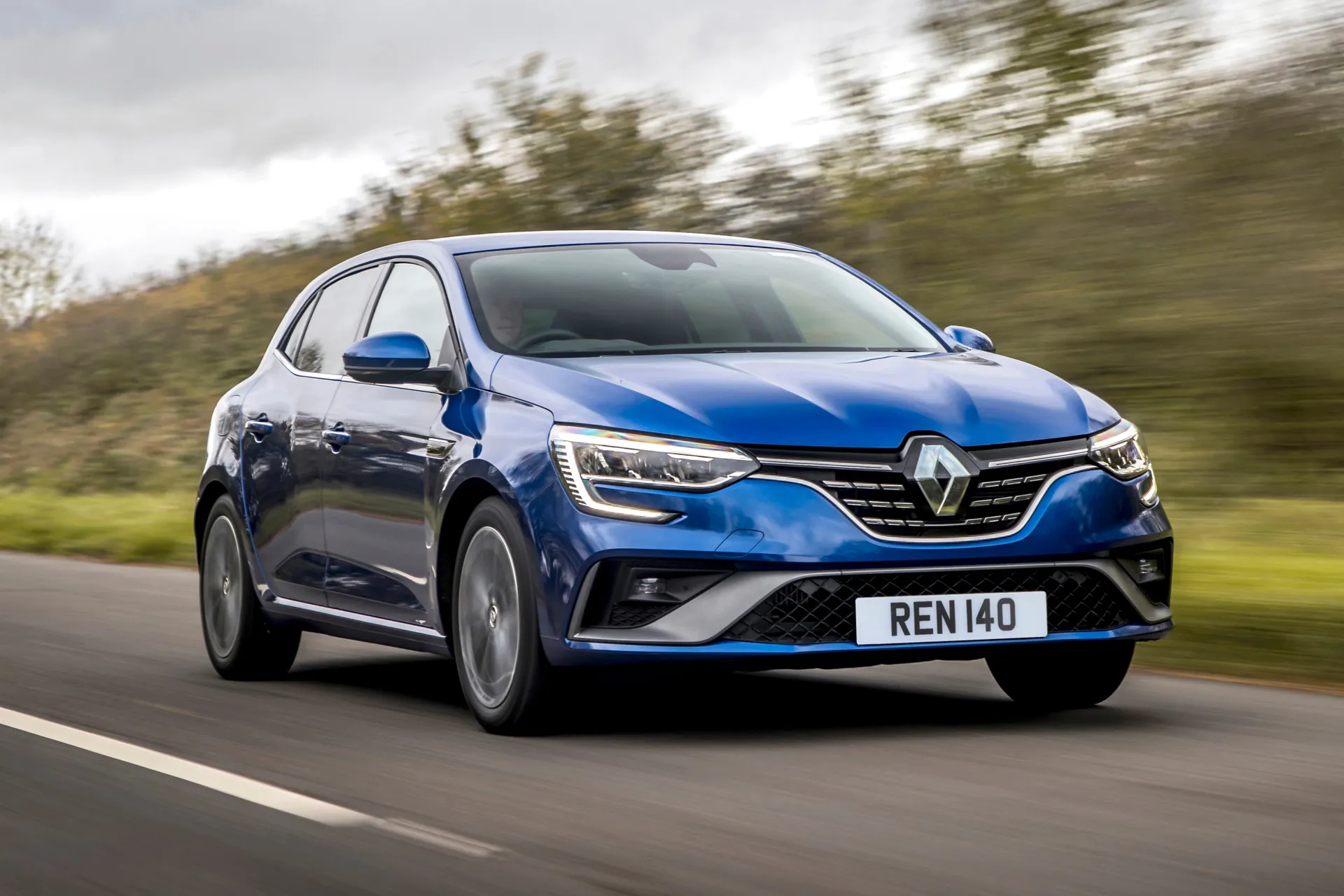
It was stuck in the past as a car built to compete with a two-generation-old Volkswagen Golf, offering a solid feel and a very comfortable ride.
It was originally launched in 2016, updated in 2018, and revised again in 2020. The latest version received full LED headlights, C-shaped front indicators, and scrolling rear indicators. Renault also introduced an R.S. Line trim, making it look like a Renaultsport model without the performance or high running costs—think Ford Focus ST-Line or Volkswagen Golf R-Line.
Although it came in three different body styles, the UK only received the five-door hatchback and the roomier Megane Sport Tourer estate. When it first arrived, the Megane offered buyers three diesel and two petrol engines, but the latest lineup was significantly slimmed, with just one of each fuel type available.
The TCe turbo petrol had a 1.3-litre capacity and 140PS output, while the Blue dCi diesel was a 1.5-litre with 115PS, and both come with a six-speed manual as standard. Buyers could add a dual-clutch ‘EDC’ automatic transmission to either engine, with a small hit to fuel economy, but a noticeable increase in acceleration.
Unless you planned on covering epic mileage, the TCe was and would still be our pick. It was smooth although gutsy with just as much poke as the diesel, but had a broader power band, so it felt more relaxing to drive. It returned a mid-40mpg reading at a steady cruise, which wasn't bad considering the performance it provided.
However, the diesel was also impressively refined on the motorway, managing over 60mpg, putting it up there with the most frugal cars in its class then. Both engines suited the Renault's relaxed character. It had soft suspension that was great at soaking up bumpy roads, but did start to wallow about if you pushed it too hard – the Ford Focus and SEAT Leon almost felt like sports cars by comparison.
The quick steering didn't help – it felt like you turned the wheel and waited for the rest of the body to catch up, while the steering resembled stirring a bowl of thick soup, rather than telling you what the front wheels were up to. It was also surprisingly easy to spin up the tyres powering out of corners. In fairness, the brakes were easy to use smoothly and the gear shift was reasonably tight and precise, but it was not enough to make the Megane any better than average to drive.
The original range kicked off with Expression, then Dynamique and Signature trims, plus GT and GT Line, the 2018 facelift scaled that back to Play, Iconic and GT Line models, and the 2020 model year trimmed the line-up down further to just two models – Iconic and the aforementioned R.S. Line.
In fairness to the Megane, it felt expensive inside with plenty of soft-touch plastics, metal ventilation knobs and a glassy finish to the centre console. The trouble was, that the media system felt like the missing link between cars from a decade ago and the slick, all-digital driving environments you'd find in the latest Volkswagen Golf or Skoda Octavia.
Both cars we've just mentioned could play the role of a family transporter better than the Megane, too, as the French car had some questionable ergonomics up front, a very cramped back seat and a boot that was not particularly easy to load.
That was the trouble with the Megane – it felt like a car that had to take on the new Volkswagen Golf armed with 10-year-old Golf technology.
Looking for a used car for sale? We've got 100s of Renault Approved Used Cars for Sale for you to choose from, including a wide range of Renault Megane cars for sale. Looking for the newer version? You'll need our Renault Megane E-Tech review.
Is the Renault Megane right for you?
There was no denying that the curvaceous design of the Megane would come as a welcome tonic to buyers sick of the same incredibly conservative designs pumped out by Hyundai, Volkswagen, and Ford year after year.
The Megane offered a quiet life behind the wheel. It was calm and relaxing in most driving scenarios, with quiet engines, a frugal diesel option, and a surprisingly low price considering the kit offered. It suited buyers on a budget who wanted a family car with a bit of panache.
What's the best Renault Megane model/engine to choose?
Although not an R.S., the TCe 140 was good fun through the corners and provided more of a warm hatch experience. It was a good all-rounder, delivering between 44 and 46mpg.
Renault claimed the 108ps 1.5 dCi could return 76mpg, it also boasted a 785-mile range on a full tank. You can't go wrong with any of the diesels if you commute via motorways.
What other cars are similar to the Renault Megane?
The Megane's still around, but it's been overhauled and is now 100 percent electric and known as the Megane E-Tech.
Anyone who needs a huge interior and massive boot should look no further than a Skoda Octavia, while the closely related SEAT Leon offers a sportier drive, and the new Volkswagen Golf is impressively hi-tech inside.
This generation of Megane has since been discontinued, but newer options such as the Kia XCeed and Vauxhall Astra are worth a look. Keener drivers will get more satisfaction behind the wheel of the latest Ford Focus and Mazda 3.
As previously mentioned an army of high-riding SUVs did a similar job but offered an upright driving position and greater versatility. These included Renault's own Kadjar, the Nissan Qashqai and Skoda Karoq. The Kadjar has since been dropped, but the new Captur is pretty good.
Comfort and design: Renault Megane interior
"It’s a shame that the styling verve of the Megane's exterior all seemed to evaporate once you stepped inside. The layout was straightforward, so there was nothing to befuddle you, but it wouldn't excite your senses very much either. You got the sense it was designed to mirror an old Volkswagen Golf for quality"
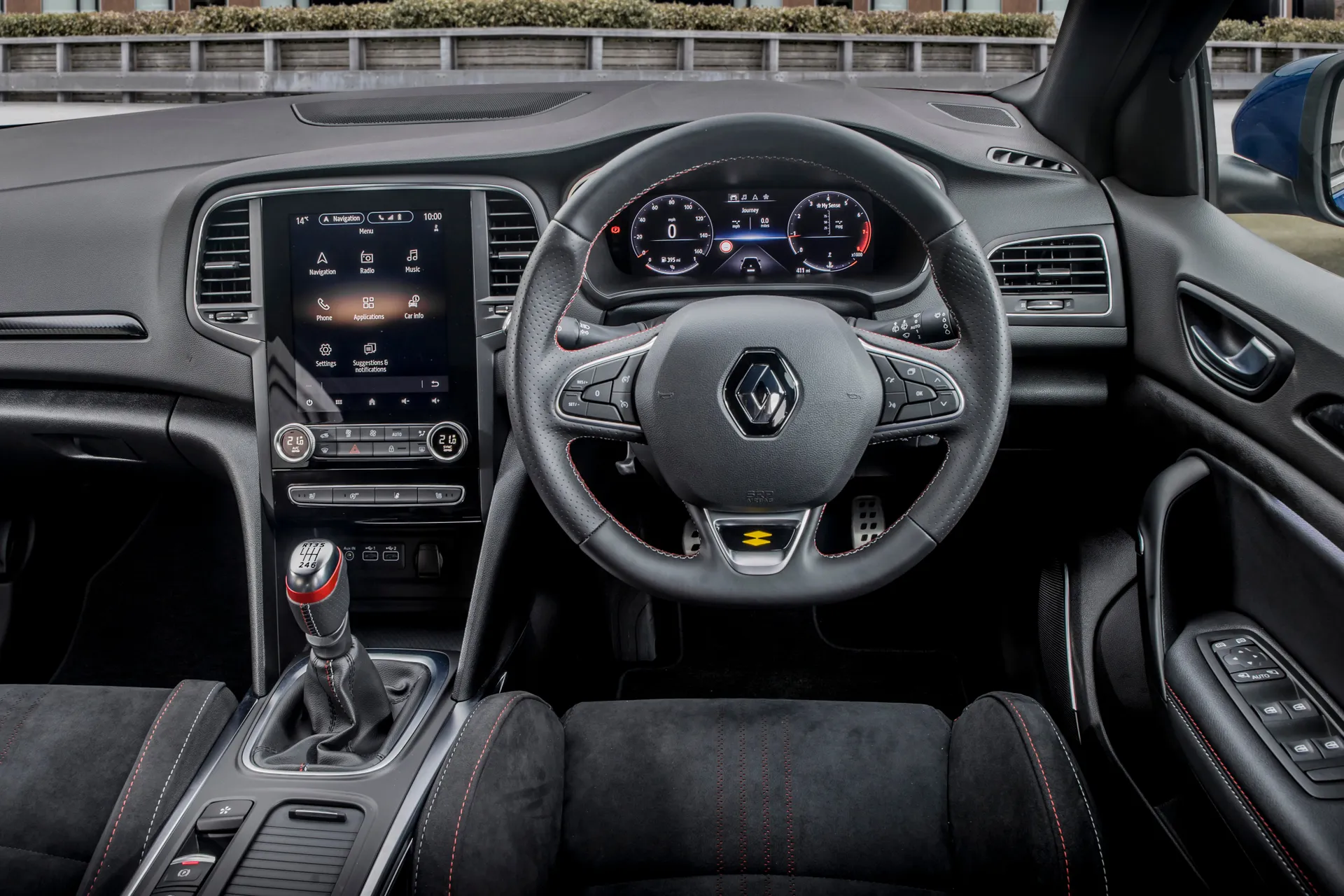
That's because front door inserts and dashboard were lined with soft-touch plastics. The front doors also had padded armrests, and the ventilation controls — which were on a glassy panel — had metal bezels. The look was completed with a smattering of faux metal plastic trims and chrome highlights. All models also came with selectable interior ambient lighting, with eight colours to light up the doors and a strip on the passenger side of the dashboard.
The front seats were mounted unusually low, giving you quite a sporty driving position, although long-legged drivers would've found the infotainment screen hard to reach.
All Meganes received seat height adjustment and lots of wheel adjustment, but it was a shame the front seats lacked lower back support and lumbar adjustment which could've solved the problem.
Quality and finish
Previous versions of the Megane fell apart here (both literally and figuratively) but the initial impression from sitting in the fourth-generation car was that Renault finally started to turn a corner on quality. Colourful LED mood lighting and an electronic handbrake helped modernise its design.
There was certainly a lot of dark trim in here, but the material quality on major touchpoints was good, and the upper sections of the dash were squidgy and pleasant to handle. The latest version upped interior quality significantly
The seats of iconic models were upholstered in a mixture of cloth and artificial leather, while R.S. Line cars received one-piece sports seats with Alcantara-like upholstery.
Infotainment: Touchscreen, USB, sat-nav and stereo in the Renault
If you're looking at an earlier version of the Megane, you may be shocked by the presence of a dot-matrix radio and naff buttons that look like they're off a nineties mobile. That's the setup in the old Expression+ trim.
Luckily, the latest lineup received a 7.0-inch touchscreen, with built-in sat-nav, Bluetooth, DAB digital radio, USB and AUX connectivity, and compatibility with Apple CarPlay and Android Auto.
R.S. Line versions had a larger 9.3-inch touchscreen, arranged in portrait orientation, something unusual for this class back then, and bigger on-screen buttons that were easier to see and hit accurately while driving. This model had a TomTom sat-nav with live traffic alerts, something that was feeling its age.
Meanwhile, the sound quality from the standard system was disappointingly weak, and you could only upgrade to the richer-sounding, bassy optional BOSE system on the top-spec models. It added £600 to the price of your car.
Space and practicality: Renault Megane boot space
The Volkswagen Golf still is the yardstick by which most family hatchbacks are measured for usability. Volkswagen even made an advert mocking this very phenomenon. Sadly for Renault, the Megane was not 'just like a Golf' regarding cabin space, with a cramped rear bench that put it at a serious disadvantage.
There wasn't much room for taller passengers in the rear, and the low-set chairs meant you couldn't slide your feet under to stretch out a little. It wasn't as cramped as a Peugeot 308, but Ford's Focus and the Skoda Octavia were much bigger.
Headroom was stingy too, and if you were trying to fit three across the back, whoever was unlucky enough to get the short straw for the middle spot was in for a seriously uncomfortable ride. Although the doors swung open wide, the flimsy plastic covers for the ISOFIX mounts were a real faff to use, making fitting a child seat tiresome. Group 1/2/3 and iSize seats worked, but the latter was a squeeze.
Rough going for anyone cooped up in the back on a long journey then, but what about those sat in the front? Things improved here, with greater space provision and some useful storage cubbies. The door bins were deep enough to hold a two-litre bottle, and there were covered cupholders, but the glovebox was titchy.
At 384 litres, boot space was average for the class, and even with the rear seats folded down (leaving a large ridge in the loading bay) this only expanded to 1,180 litres, some 400 litres down on the Skoda Octavia hatch. The tall load lip made hoisting heavy luggage into place a pain, too.
It lacked the functionality of the best family cars too, with no false floor to store the parcel shelf under and the bog standard 60:40 two-way split for the folding seat backs.
In a class full of practical cars that featured clever touches to make life easier, the Renault felt pretty poor.
Planning to fit the Renault Megane in your garage? Note its exterior dimensions. It measures 4359mm in length, 1814mm in width (with the door mirrors folded) and 1445mm in height.
Handling and ride quality: What is the Renault Megane like to drive?
"Bumps on the road unsettled the Megane. It featured a softer setup than its sportier competitors, so it wafted over imperfections, shrugging off poor surfaces with true Gallic nonchalance."
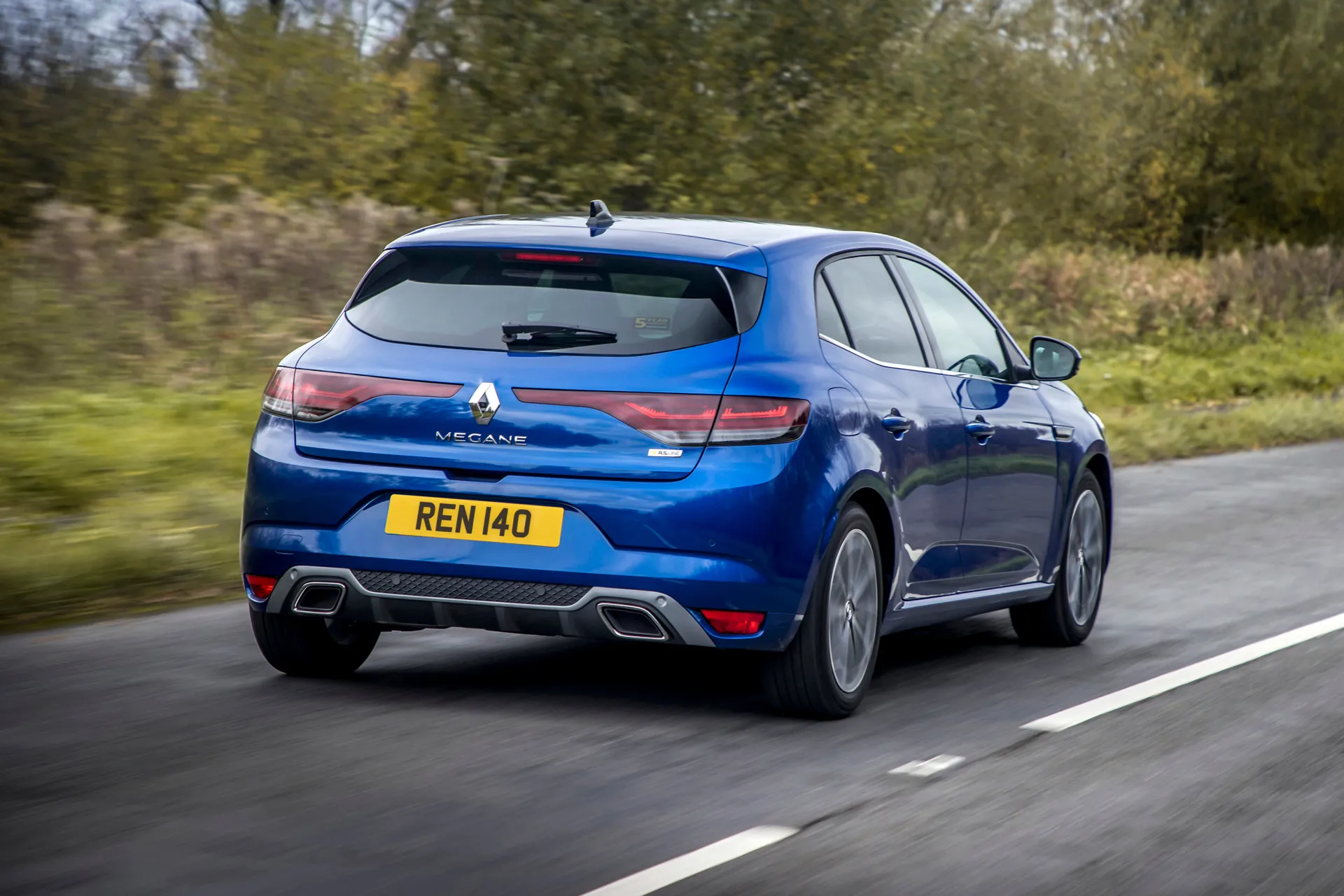
There were no adaptive dampers to help vary the stiffness of the springs, there wasn't much call for them either. Its mature composure was a major asset, which helped the Renault feel stable and secure.
All models came with three driving modes that altered the amount of steering resistance and throttle sensitivity, but it didn't make the Megane any nicer to drive, no matter which setting you went for. It rolled and wallowed in corners in a way that could feel quite unsettling and you'd feel the body squirm underneath if you hit a bump mid-corner.
Choosing to target ride comfort has affected other areas though. The Megane occasionally felt loose and floaty over big bumps.
What engines and gearboxes are available in the Renault Megane?
Most of the Renault Megane's rivals offered a wider range of engines. The Megane came with a six-speed manual gearbox, with the option of a seven-speed dual-clutch auto.
The 1.3-litre four-cylinder TCe 140 petrol turbo had the broadest appeal. As the name implies it produced a healthy 140PS and 240Nm of torque, giving it decent get-up-and-go, and strong in-gear pace, although it responded best to being worked in its mid-range.
With an extra cylinder to play with, it felt more refined than rival three-cylinders, with a less vocal character and fewer vibrations from the transmission, although it wobbled slightly when sat at the lights. It completed the 0-62mph sprint in well under 10 seconds and felt even nippier when paired with the automatic gearbox. It was not quite as brisk as the 1.5-litre in the latest Volkswagen Golf or Seat Leon and its power quickly faded once you were past its mid-range. The 1.5-litre diesel felt considerably slower, but it was a motorway muncher.
The line-up was broader when it was launched. It started with a 130PS 1.2-litre petrol and a diesel with the same capacity. There was also a 1.6-litre diesel with either one turbocharger (and 130PS) or two (165PS) plus a fairly rapid 1.6 petrol with over 200PS.
The last two were only available in the sportiest GT Nav trim though, and the petrol never quite lived up to its junior hot hatch billing, with slightly laboured performance, and nowhere near the pace of a Golf GTI. They also came fitted with an older six-speed auto, which wasn't as well sorted as the (still sluggish) new one.
Renault was poised to introduce a plug-in hybrid version with a 1.6-litre petrol engine and an electric motor capable of travelling up to 30 miles on battery power alone.
Refinement and noise levels
One of the Megane's strongest qualities was its hushed and relaxed manner. It generated little wind flutter or road noise from the tyres, even at motorway speeds, so it was stress-free to drive. However, it was at its best on the motorway when fitted with the £1000 Motorway Pack.
The latest engines were muted performers too. There was a lack of noise from the 1.5-litre diesel, which considering its size and output you'd expect it to be as smooth as a JCB digger.
Of course, the 1.3-litre petrol was even quieter around town, but did require a bit more work on the part of its driver (and more revs) to keep your momentum up on faster roads. Most of the older engines were quiet, except the high-powered 1.6-litre petrol in the GT Nav, which sounded laboured when worked.
Unfortunately, some of the basic control weights let the side down. The six-speed manual gearbox had a precise shift action, let down by a rather abrupt clutch pedal.
While the dual-clutch transmission got around this issue, it felt indecisive, even when using the paddles mounted on the steering wheel, pausing for a moment or two before selecting the next forward ratio.
Safety equipment: How safe is the Renault Megane?
Renault has a strong reputation for building safe cars. So as you would expect, the Megane got a maximum five-star rating from independent crash testers Euro NCAP when it was first certified at the end of 2015.
A closer examination of the individual categories painted a slightly different picture though. It outshined some rivals, including the Hyundai i30 and Vauxhall Astra, but newer cars like the Ford Focus and Volkswagen Golf provide a better level of adult, child and pedestrian protection, as to be expected.
Every Megane had cruise control with a speed limiter, front, rear, and curtain airbags on both sides and a hill start assistant that was too keen to hold onto the brakes. Every model got a foam tyre repair kit for taking care of punctures - a spare wheel was a £200 option.
MPG and fuel costs: What does a Renault Megane cost to run?
"The Blue dCi engine was the best option if you were keeping a careful eye on your monthly outgoings. It didn't provide class-leading fuel economy, but an official WLTP figure of over 60mpg was not to be sniffed at. That's impressive even by today's standards."
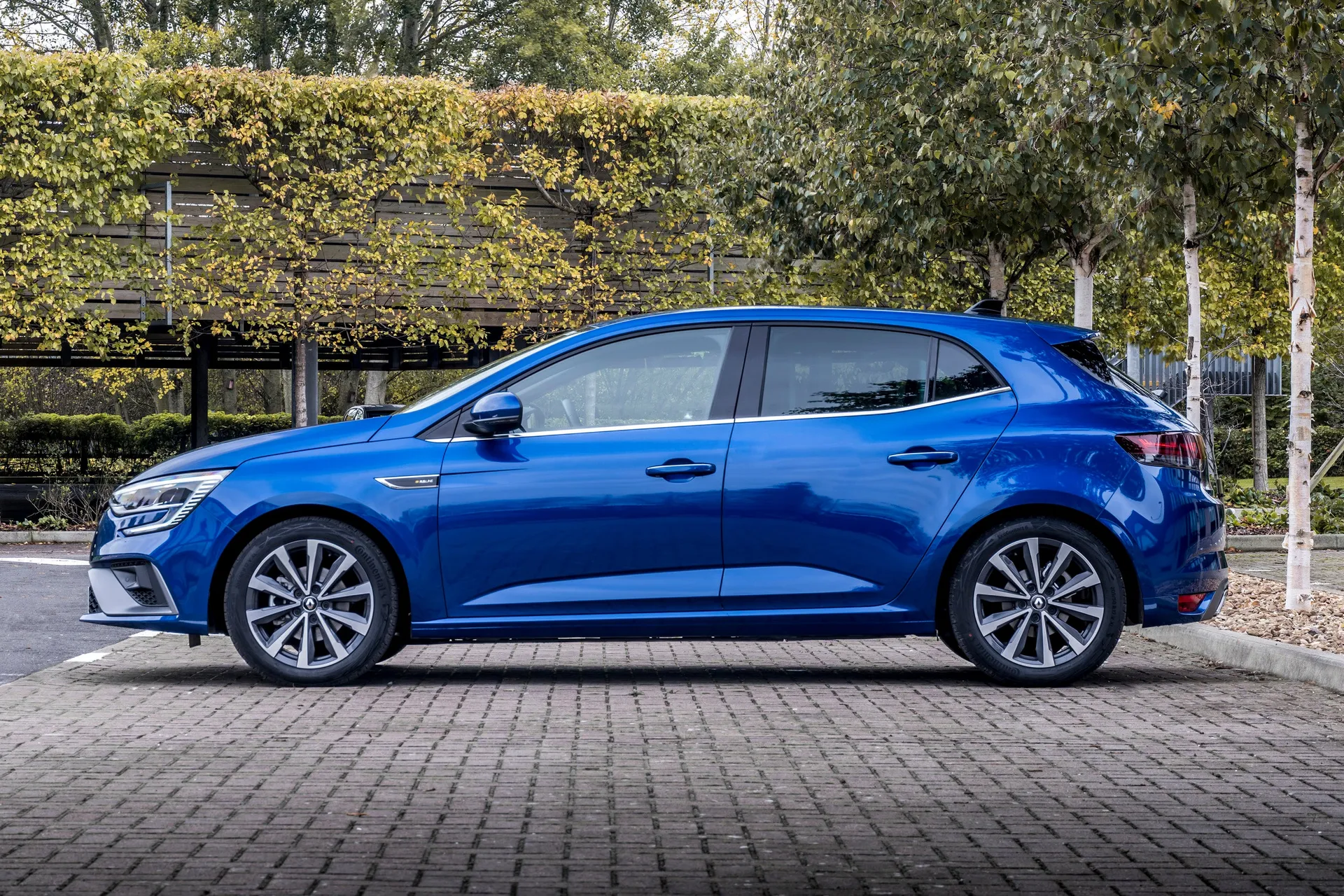
When equipped with the EDC automatic transmission, this was around 50mpg. Owners reporting to our Real MPG checker got a realistic 53.8mpg for the older 110PS version of this engine in real-world driving.
Petrol buyers shouldn't fret though. The older 1.2 TCe could be quite thirsty, but the newer 1.3-litre should be able to return around 45mpg when driven gently and equipped with a manual gearbox.
That means you should expect to go over 500 miles on a tank, compared with over 600 in the diesel version.
Renault Megane reliability and warranty
The Megane's been around for years and any underlying issues should've been sorted in previous ownership. It's worth looking for a well-maintained car as diesel particulate filters were known to clog, leading to expensive repairs. Likewise, the automatic 'box would occasionally not engage the clutch fully, resulting in engine judder. This was often fixed under manufacturer recall.
Renault came second to last in the latest HonestJohn.co.uk satisfaction index with 84.42 percent.
Renault Megane insurance groups and costs
Many of its rivals come with a broader spread of engines (including some 1.0-litre tiddlers) to help lower the price of entry and insurance premiums, but the least powerful Megane had 115PS, putting it in Group 16.
That's eight groups higher than the most affordable version of the Kia Ceed and Hyundai i30. The petrol model starts at Group 18, so it's not great for insuring new drivers.
The best way around this is to go for the older version with the 1.2-litre engine. This has a bit less power and drops four insurance bands, bringing it closer in line with its mainstream rivals from Ford, Vauxhall and Volkswagen.
VED car tax: What is the annual road tax on a Renault Megane?
The cheapest car to tax is the 1.6 E-Tech PHEV 160 R.S.Line auto. This emits an eco-friendly 28g/km of c02, putting it Band B. Simply put, you'll pay nothing for the first year, rising to £180 thereafter for cars registered post 1 April 2017.
Disregarding the speedy RS range, the 2020 GT Line TCe 140 is the most expensive. This emits 150g/km of c02, meaning you'll pay £270 for the first year and £190 onwards.
Renault Megane price
"There are many poor examples on the used market, but there are also bargains. Budget around £7,000 for a good example."
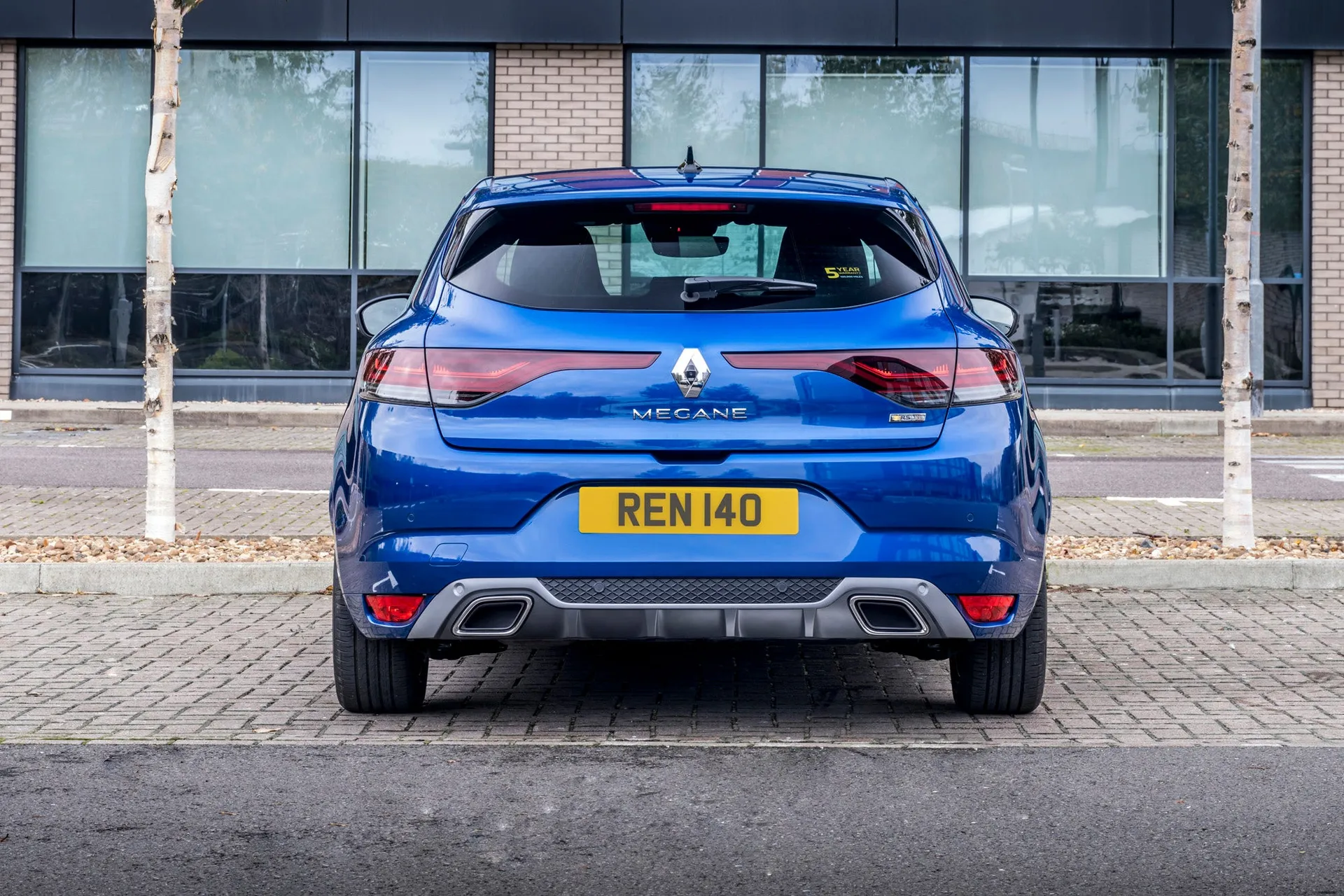
Early cars that have been oddly modified and have Nasa-rocket-mileage start from £1,600. Sub-100,000-mile cars start at around £5,300 while tastier GT examples are priced from £10,500. However, that gets you a fully loaded 2016 car with just 54,000 miles on the odometer.
Full-fat R.S. 280 cars start from around £18,000 while a 300 Trophy can be had from £21,000.
Trim levels and standard equipment
At launch, picking the right Megane was harder than choosing two of the best flavours for your ice cream cone at the gelateria; far too many flavours, and not enough information on what each contains.
Luckily, there was no plain 'Vanilla', and even the cheapest Renault Megane Expression+ came with all-round electric windows, Bluetooth, a leather steering wheel, air-con, and even adjustable lumbar support in the front seats.
The standalone Renault Megane GT Nav used to be the top of the range, with a sportier setup and styling cues, and Renault's innovative 4Control four-wheel steering system, full LED headlights, stiffer suspension and stripy sport seats.
Renault saw the light and trimmed the range to three models: Play, Iconic and GT Line. Once again, it offered a generous number of creature comforts. All newer Meganes had a 7.0-inch touchscreen, Apple CarPlay and Android Auto, climate control, keyless entry and alloy rims.
In 2020, the brand replaced the sportiest version with a new trim, called Renault Megane R.S. Line, cribbing the looks and the interior details of the high-performance hot hatch version, and it had a larger and slicker 9.3-inch central display.
Bright LED headlights were standard in the two model range, with entry-level Iconic cars getting a seven-inch infotainment screen, sat-nav, interior ambient lighting and front and rear parking sensors.
Ask the heycar experts: common questions
Are Renault Megane cars reliable?
How good is a Renault Megane?
Where was the Renault Megane manufactured?
When is the cam belt change on a Renault Megane?
Get our latest advice, news and offers
Keep me updated by email with the latest advice, news and offers from heycar.
By submitting you agree to our privacy policy
